I need to connect two microprocessors that only have USB host, not OTG or client.
Obviously I would like to connect them as directly and quickly (ie 10's of Mbit up to 100) as possible. A USB to serial to USB bridge is simply not fast enough. Also Prolific's PL-25A1 looks ideal but is specific for windows whereas both of my platforms are running linux.
My current thought is to implement a USB to Ethernet to USB solution. For example if I used an SMSC LAN9512 then I would get my ethernet connection. The LAN9512 has built in MAC and PHY.
My question is how much of a physical interface do I need to implement?
Similar to TI's AN-1519 as referenced in this exchange. can I get away with some 33nF caps?
Thanks in advance!

